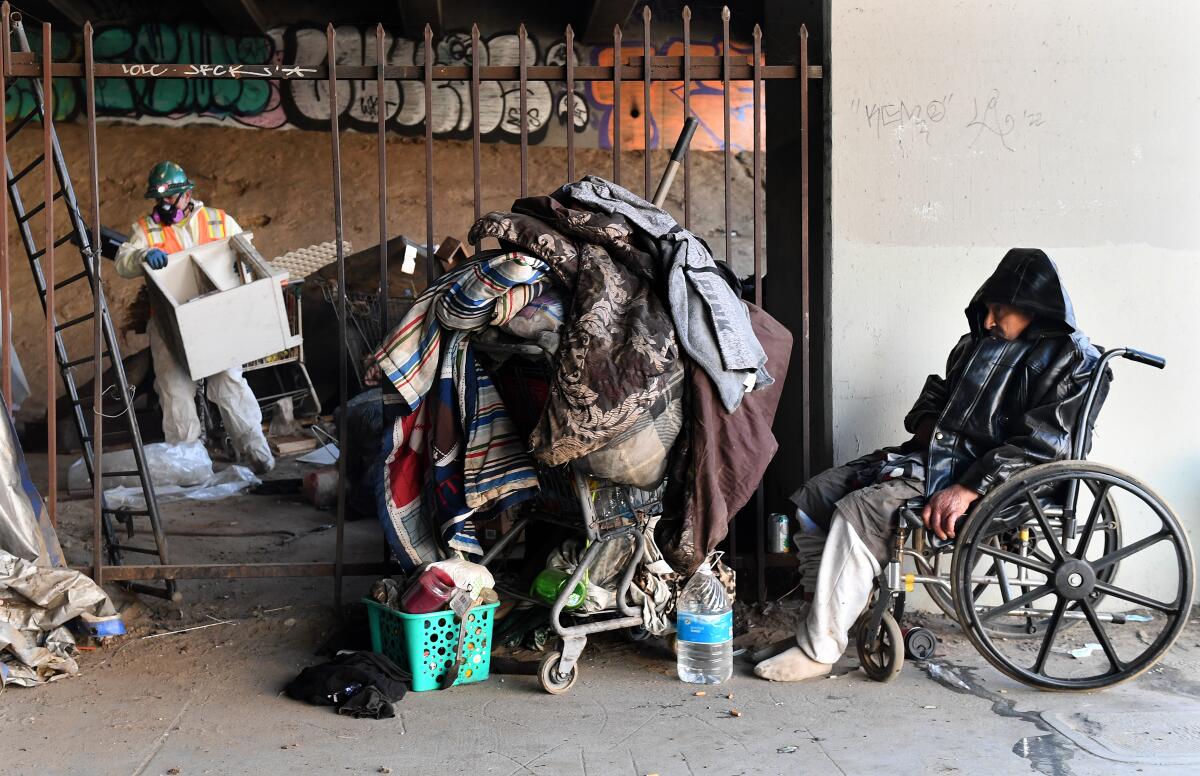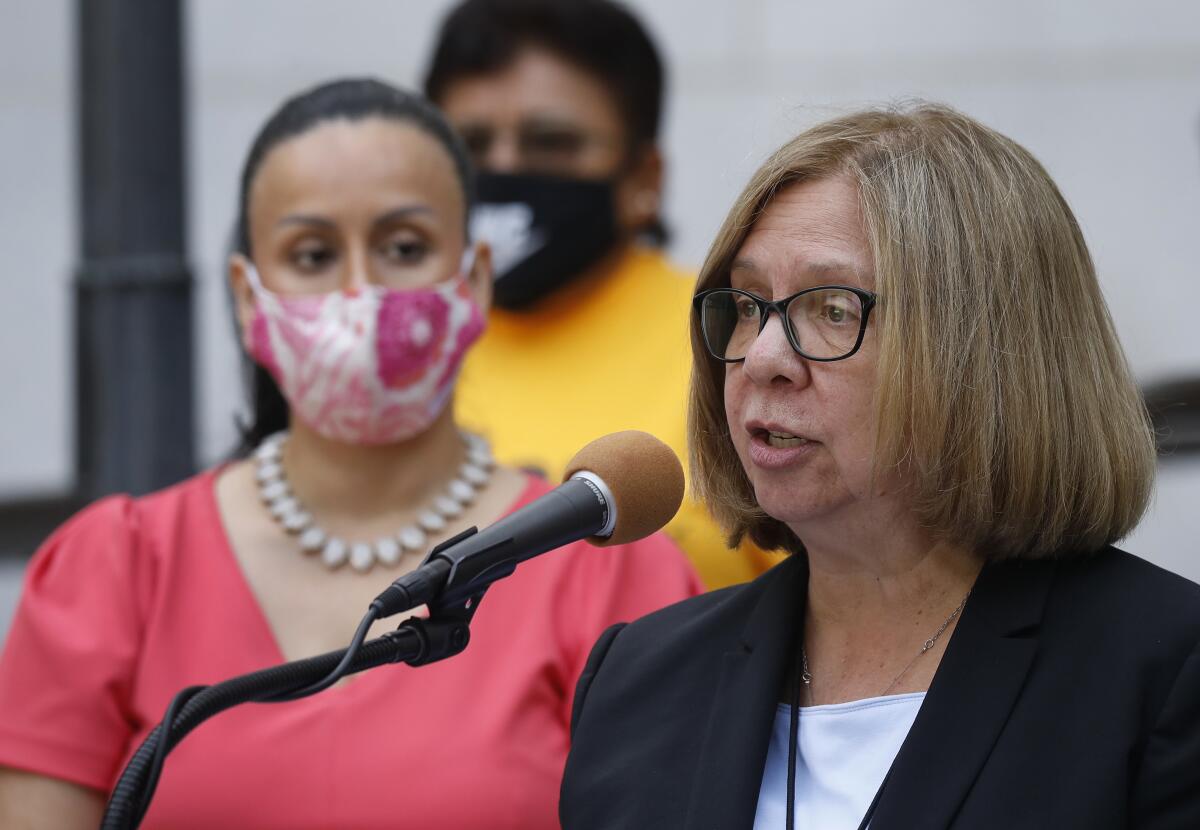L.A. paying up to $837,000 per unit for homeless housing. Audit raises red flags

A $1.2-billion housing bond measure approved by voters six years ago is still falling far short of its promise to address L.A.’s homelessness crisis, according to a city audit released Wednesday.
Costs for Proposition HHH-funded projects continued to rise — with the most expensive one coming in at $837,000 per housing unit — and only half the projects are scheduled to be ready for occupancy by 2023, the audit found.
“Although Los Angeles has made some progress with Proposition HHH, it hasn’t been enough,” City Controller Ron Galperin said in a statement released with the report. “The costs are too high and the pace is far too slow to address the tragedy on our streets.”
Still, Galperin, struck a milder tone than in his 2019 and 2020 audits, in which he said the city should claw back unspent money from housing projects to build more shelters.
The new audit, covering 2021 spending, dinged the city’s Housing Department for not following that recommendation, but also looked beyond Proposition HHH, especially in light of an effort by homeless advocacy groups to place a new homelessness tax on the November ballot.
“Given the scale of the homelessness crisis in Los Angeles, the need to build supportive, affordable and interim housing will remain long after funds from Proposition HHH are fully depleted,” the audit read.
“If the city doesn’t learn from its mistakes, it risks repeating them,” Galperin said in his statement. “Angelenos, sheltered and unsheltered, cannot afford that to happen.”

In a detailed response, Ann Sewill, general manager of the city’s Housing Department, argued that Proposition HHH is on track to meet its goals but that it is only a “a part of the solution” and the best course is to “complete the program and deliver more units ... to fulfill the commitment that the city made as part of the HHH promise.”
At the end of 2021, there were 8,000 HHH-supported units in some stage of development, and the city continues to produce 300 units without HHH funding, Sewill said.
The financial report provided a nuanced picture of HHH progress.
Most of the bond proceeds remain unspent. Through 2021, the city is committed to disburse $750 million to developers. Fewer than 1,200 housing units had been completed, a number it described as “wholly inadequate in the context of the ongoing homelessness emergency,” but almost 4,400 units are in construction. Another, 1,880 units are in pre-development.
Altogether, of 8,091 housing units spread across 125 projects, 16% are ready for occupancy, 58% are in construction and 26% are in pre-development, according to the report.
Just under 7,000 of those units are designated as “supportive,” meaning they are paired with services for formerly homeless people, with the remaining ones reserved for low-income renters.
The audit found promise in the results of a $120-million innovation fund set aside in 2019 with the goal of lowering the cost and speeding the development time of HHH projects, noting the average cost of the 15 projects in development with that fund was under $450,000.
Among the other projects, the audit said an estimated 14% of units in construction exceed $700,000 per unit.
Auditors acknowledged that the high cost is in part attributable to a “pandemic-driven spike in lumber and other building materials.” Galperin also found that the COVID-19 pandemic had contributed to delays in getting projects started.
Publication of the report comes as the Los Angeles Homeless Services Authority has resumed its annual homeless census. The “point-in-time” homeless count helps officials determine where to provide services for people living on the streets and the allocation of state and federal funding.
The last count conducted in 2020 found that there were 66,436 people living on the streets of L.A. County, a 13% increase from the previous year. The results of the latest count won’t be available until May or June.
Galperin pointed out that the city’s homeless population had grown by more than 40% since voters approved Proposition HHH in 2016, a figure officials believe may be higher because of the pandemic.
In her response, Sewill identified several factors that contribute to the cost of HHH projects, including requirements to pay prevailing wages and provide higher energy efficiency standards, accessibility standards and furniture. In addition, she said, projects developed on publicly-owned land, such as the one costing $837,000 per unit, include requirements for community amenities such as clinics or child centers, raising their cost.
“Failing to acknowledge the market context makes it seem that it is impossible to identify a feasible plan to produce the housing we need,” Sewill wrote.
More to Read
Sign up for Essential California
The most important California stories and recommendations in your inbox every morning.
You may occasionally receive promotional content from the Los Angeles Times.












